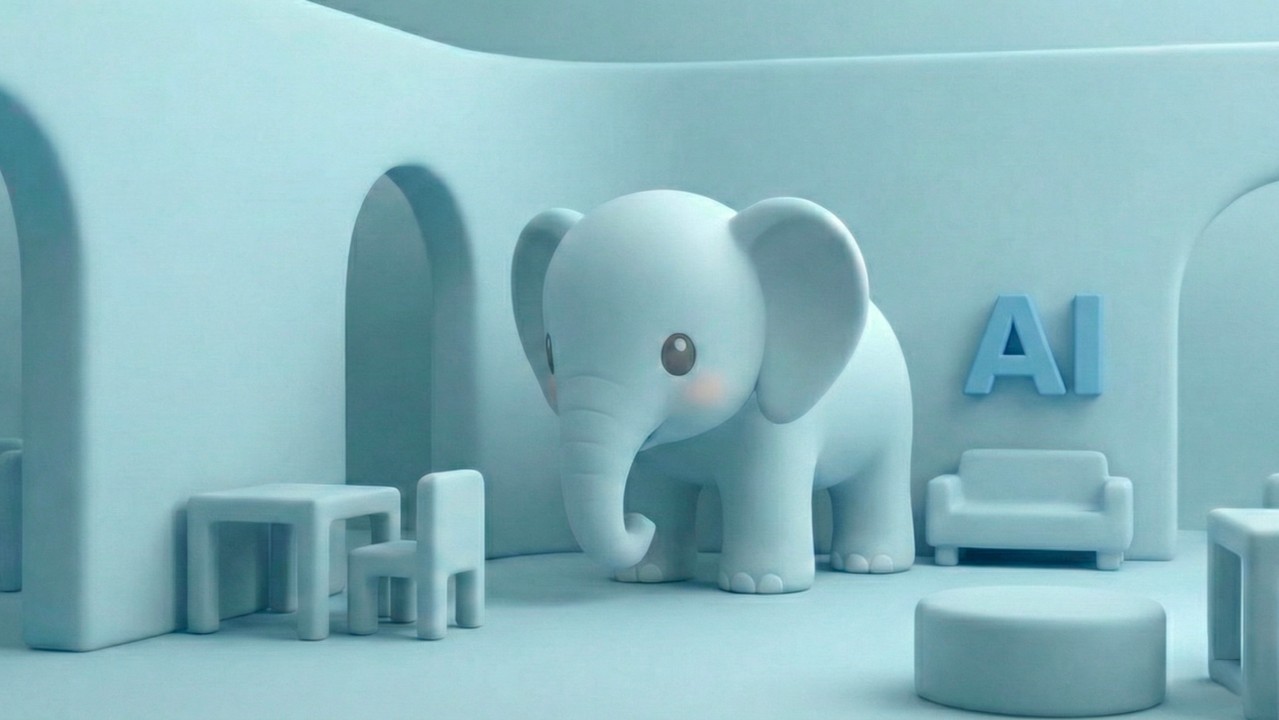There’s a strange feeling floating in the digital air, and I think many of us can sense it. Every new AI-powered tool looks like a twin of the previous one: the same white background, the same minimalist text box, the same promise of computational magic. It’s as if the creativity of the industry has been frozen.
We are living through the greatest cognitive revolution in the history of technology - yet we’re watching it unfold through the same interface we used twenty years ago.
We’ve changed the engine, but not the steering wheel.
The Aesthetics of Indifference
As Danilo Amorim points out in his article “UX and the Aesthetics of AI: Homogenization and Creativity”, we’re building extraordinary artificial intelligences - but trapping them inside lifeless forms.
We call them “conversational assistants,” yet they converse like silent oracles. We ask questions and receive answers, without context, without gestures, without presence. Amorim calls this “the aesthetics of indifference”: a neutral, anesthetized design that reflects neither the cognitive richness of AI nor the emotional depth of human beings.
Natural language - which could have opened a new era of interaction — has become a lazy interface.
We type, we hit Enter, we read. And repeat.
A digital ritual that feels more like routine than discovery.
The Paradox of Wasted Power
This uniformity isn’t just an aesthetic issue; it’s epistemological.
We keep applying the logic of search engines to interact with an intelligence that actually thinks through correlations, contexts, emotions, and multimodal signals.
A recent study, “Generative AI in Multimodal User Interfaces”, shows that AI interaction is no longer about text alone: it now involves voice, image, gesture, and environmental context.
And yet, we still talk to it as if it were Google Search circa 2005: one line, one command, one result.
It’s like hiring the brightest mind on the planet and locking it in a closet, passing notes under the door.
The problem isn’t the technology - it’s the interface.
It’s the way we choose to encapsulate complexity in the simplest possible format, until it becomes almost meaningless.
And yes: that limits not only the potential of AI but also our own experience as users and creators.
Beauty as Intelligence
There’s another aspect we often overlook: aesthetics as a cognitive dimension.
Back in the 1990s, researchers Masaaki Kurosu and Kaori Kashimura demonstrated that what we perceive as beautiful also feels easier to use.
And Don Norman, in his book Emotional Design, added an essential insight: beautiful objects make us more patient, more creative, more forgiving of errors.
Aesthetics isn’t a luxury - it’s a form of intelligence.
So why do today’s AI interfaces feel so dull, so identical?
Perhaps because we’ve mistaken simplicity for neutrality.
But neutrality isn’t clarity - it’s just the elegant face of indifference.
When everything looks the same, we stop questioning.
And when we stop questioning, we stop imagining.
Generative Homogenization
A troubling phenomenon is spreading among designers: design fixation.
Generative tools - DALL·E, Midjourney, Firefly - produce visual patterns that quickly become familiar, recognizable, almost standard.
The issue is that instead of using these outputs as springboards, creatives often replicate them, perpetuating the machine’s aesthetic. This fuels a vicious cycle of sameness: AI learns from uniform data, generates uniform outputs, and we accept them as aesthetic norms.
The result?
A new form of algorithmic conformity, disguised as innovation.
Instead of freeing us, it risks making us more predictable.
Perhaps we should ask ourselves: are we teaching AI to be more human - or are we becoming more mechanical?
Starting from Design, Not from the Prompt
The future of interaction won’t be merely “conversational,” at least not in the narrow sense of the word.
It will be collaborative, multimodal, and sensorial.
Imagine an AI that doesn’t wait for your input, but observes your workflow and offers visual suggestions; that interprets silence as hesitation; that adapts tone and language to your emotional state.
A system that adapts, that reveals itself, that accompanies you.
The interfaces of the future shouldn’t hide AI’s complexity - they should make it interpretable.
They should show how it thinks, not just what it answers.
This theme of transparency and explainability has been explored in recent research highlighting how users increasingly demand not just outputs, but reasons.
AI needs visibility from the start: it should explain its reasoning and expose potential biases to build trust.
Multimodal interfaces - integrating text, voice, gesture, gaze, and image - are already emerging, but they also raise new challenges around coherence, privacy, and context.
In short: it’s a paradigm shift.
No longer prompt → response, but situation → collaboration.
Augmented Humanity
If the goal of AI is to augment human intelligence, then its design must amplify — not replace — our cognitive, emotional, and creative capacities.
We need tools that help us think, not just answer.
That encourage exploration, not just completion.
In this sense, aesthetics becomes a form of ethics.
Every interface is a declaration of values — about what matters, what is human, and what deserves attention.
The challenge isn’t to make AI more like us, but to make it capable of coexisting with our complexity.
To leave space for mistakes, reflection, and improvisation.
Because even emptiness - that white space between question and answer - is part of the human experience.
Conclusion - Imagination as a Political Act
Perhaps the real limit of artificial intelligence isn’t technical, but imaginative.
We fear boldness. We hesitate to design new forms of dialogue with the non-human.
We’ve replaced the language of possibility with the language of functionality.
But if everything in the digital world begins to look the same, the problem isn’t AI.
The problem is us - our reluctance to break familiar paradigms.
Innovation doesn’t grow from efficiency; it grows from the courage to imagine.
And the mission of those who design experiences - designers, researchers, developers, communicators - is precisely this:
to give shape back to imagination.
To create interfaces that are not just tools, but spaces for relationship.
Because perhaps, in the end, the future of AI will not be a conversation.
It will be a sensitive collaboration between two different yet complementary intelligences:
the artificial one that computes, and the human one that dreams.



